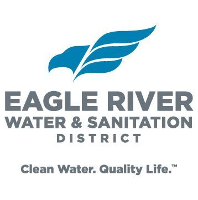New Mexico Scores $3.54M Grant for Local Food Supply Chain – Supply Chain Brain

Federal Grant Bolsters New Mexico’s Food Supply Chain in Alignment with Sustainable Development Goals
Executive Summary
The United States federal government has allocated a $3.54 million Resilient Food Systems Infrastructure (RFSI) grant to the state of New Mexico. This funding is designated to strengthen the middle of the local food supply chain, encompassing processing, aggregation, and distribution. The initiative directly supports 18 local agribusinesses, advancing multiple Sustainable Development Goals (SDGs) by enhancing food security, promoting economic growth, and building resilient community infrastructure.
Alignment with Key Sustainable Development Goals
-
SDG 2: Zero Hunger
- The grant aims to improve food security by strengthening local distribution capacity, ensuring that nutritious food reaches communities more effectively.
- Funding for projects like mobile cold storage units for the Frontier Food Hub directly addresses the challenge of food loss and waste, a key target under SDG 2.
- Support for local food pantries and seed libraries enhances community access to food and promotes sustainable agricultural practices.
-
SDG 8: Decent Work and Economic Growth
- The investment in 18 New Mexico-based agribusinesses stimulates the local economy and supports small and medium-sized enterprises (SMEs) in the agricultural sector.
- As stated by Governor Lujan Grisham, supporting farmers and food entrepreneurs is a direct “investment in our economy,” fostering job creation and sustainable economic development.
-
SDG 12: Responsible Consumption and Production
- By focusing on the “middle of the food supply chain,” the grant promotes shorter, more efficient, and sustainable production patterns.
- Strengthening local processing and distribution reduces reliance on long-haul transportation, contributing to a smaller carbon footprint and less food spoilage.
- Upgrades to processing equipment, such as for La Mesa Organic Farms, enable more efficient and sustainable handling of locally produced food.
-
SDG 5: Gender Equality
- The grant provides targeted support for the expansion of woman-owned enterprises, such as the Statewide Products Company, directly contributing to the economic empowerment of women.
-
SDG 11: Sustainable Cities and Communities
- The initiative builds more resilient and self-sufficient communities by ensuring that “more of the food on our tables is produced, processed and distributed right here in New Mexico.”
- Enhancing local food infrastructure is critical for creating sustainable communities with reliable access to essential resources.
Strategic Impact on Food System Resilience
The RFSI grant program’s strategic focus on infrastructure for processing, aggregation, and distribution addresses a critical gap in local food systems. By funding equipment and construction, the program enhances the capacity of local producers to bring their products to market efficiently. This approach not only supports individual businesses but also builds a more robust and resilient food network for the entire state, aligning with the overarching goal of creating sustainable systems capable of withstanding future disruptions.
Analysis of SDGs in the Article
1. Which SDGs are addressed or connected to the issues highlighted in the article?
-
SDG 2: Zero Hunger
- The article focuses on strengthening the local food supply chain, which is fundamental to ensuring food security and access to nutritious food. The grant supports projects like a food pantry, directly addressing hunger at the community level.
-
SDG 5: Gender Equality
- The article explicitly mentions that the grant will fund “expanded services for woman-owned food distribution service Statewide Products Company,” directly supporting female entrepreneurship and economic empowerment.
-
SDG 8: Decent Work and Economic Growth
- The grant is described as an “investment in our economy” that supports “farmers, ranchers and food entrepreneurs.” By providing funds to 18 agribusinesses, it promotes local economic growth and supports small-scale enterprises.
-
SDG 9: Industry, Innovation and Infrastructure
- The grant is named the “Resilient Food Systems Infrastructure (RFSI) grant.” It funds tangible infrastructure like “mobile cold storage units” and “mobile kitchen and processing equipment upgrades” to build a more resilient and efficient food supply chain.
-
SDG 12: Responsible Consumption and Production
- By strengthening the middle of the supply chain (processing, aggregation, distribution) at a local level, the initiative promotes more sustainable production patterns. Funding for cold storage units helps reduce food loss and waste during distribution.
2. What specific targets under those SDGs can be identified based on the article’s content?
-
Target 2.1: By 2030, end hunger and ensure access by all people, in particular the poor and people in vulnerable situations, including infants, to safe, nutritious and sufficient food all year round.
- The funding for the “Frontier Food Hub,” which operates a food pantry, directly contributes to this target by improving food access for communities.
-
Target 2.3: By 2030, double the agricultural productivity and incomes of small-scale food producers, in particular women, indigenous peoples, family farmers, pastoralists and fishers.
- The grant supports “farmers, ranchers and food entrepreneurs” and local “agribusinesses,” aiming to strengthen their operations and by extension, their economic viability and income.
-
Target 5.5: Ensure women’s full and effective participation and equal opportunities for leadership at all levels of decision-making in political, economic and public life.
- The specific allocation of funds to a “woman-owned food distribution service” is a direct action to support women in economic leadership roles and promote their participation in the local economy.
-
Target 8.3: Promote development-oriented policies that support productive activities, decent job creation, entrepreneurship, creativity and innovation, and encourage the formalization and growth of micro-, small- and medium-sized enterprises.
- The grant program itself is a development-oriented policy that directly funds and encourages the growth of 18 New Mexico-based agribusinesses.
-
Target 9.1: Develop quality, reliable, sustainable and resilient infrastructure… to support economic development and human well-being, with a focus on affordable and equitable access for all.
- The grant’s purpose is to fund “Resilient Food Systems Infrastructure,” including cold storage and processing equipment, which directly aligns with building resilient infrastructure for the food sector.
-
Target 12.3: By 2030, halve per capita global food waste at the retail and consumer levels and reduce food losses along production and supply chains, including post-harvest losses.
- The purchase of “two mobile cold storage units” is a specific measure to reduce food spoilage and loss during the aggregation and distribution phases of the supply chain.
3. Are there any indicators mentioned or implied in the article that can be used to measure progress towards the identified targets?
- Financial Investment: The total grant amount of “$3.54 million” serves as a primary indicator of the financial resources mobilized to strengthen the local food system.
- Number of Supported Enterprises: The article states the grant will be divided among “18 New Mexico-based agribusinesses,” providing a clear metric for the number of small and medium-sized enterprises supported.
- Number of Women-Owned Businesses Supported: The specific mention of funding for a “woman-owned food distribution service” implies that the number of women-led businesses receiving aid is a measurable indicator of progress towards gender equality targets.
- Infrastructure Development: The article specifies the funding will be used for “two mobile cold storage units” and “mobile kitchen and processing equipment upgrades.” The number and type of infrastructure assets created or upgraded are direct indicators of progress.
- Support for Food Security Initiatives: The funding for a “food pantry and seed library” can be measured by the increased capacity or number of people served by these community resources.
SDGs, Targets and Indicators Summary
| SDGs | Targets | Indicators |
|---|---|---|
| SDG 2: Zero Hunger | 2.1: Ensure access to safe, nutritious and sufficient food. 2.3: Double the agricultural productivity and incomes of small-scale food producers. |
– Funding allocated to a food pantry. – Number of farmers, ranchers, and food entrepreneurs supported (18 agribusinesses). |
| SDG 5: Gender Equality | 5.5: Ensure women’s full and effective participation and equal opportunities for leadership in economic life. | – Number of women-owned businesses receiving funding (at least one mentioned). |
| SDG 8: Decent Work and Economic Growth | 8.3: Promote policies that support entrepreneurship and the growth of micro-, small- and medium-sized enterprises. | – Total financial investment in local businesses ($3.54 million). – Number of agribusinesses supported (18). |
| SDG 9: Industry, Innovation and Infrastructure | 9.1: Develop quality, reliable, sustainable and resilient infrastructure. | – Number of infrastructure projects funded (e.g., two mobile cold storage units, mobile kitchen upgrades). |
| SDG 12: Responsible Consumption and Production | 12.3: Halve food waste and reduce food losses along production and supply chains. | – Investment in infrastructure aimed at reducing food loss (e.g., mobile cold storage units). |
Source: supplychainbrain.com
What is Your Reaction?
 Like
0
Like
0
 Dislike
0
Dislike
0
 Love
0
Love
0
 Funny
0
Funny
0
 Angry
0
Angry
0
 Sad
0
Sad
0
 Wow
0
Wow
0




















































.jpg.webp?itok=0ZsAnae9#)
























